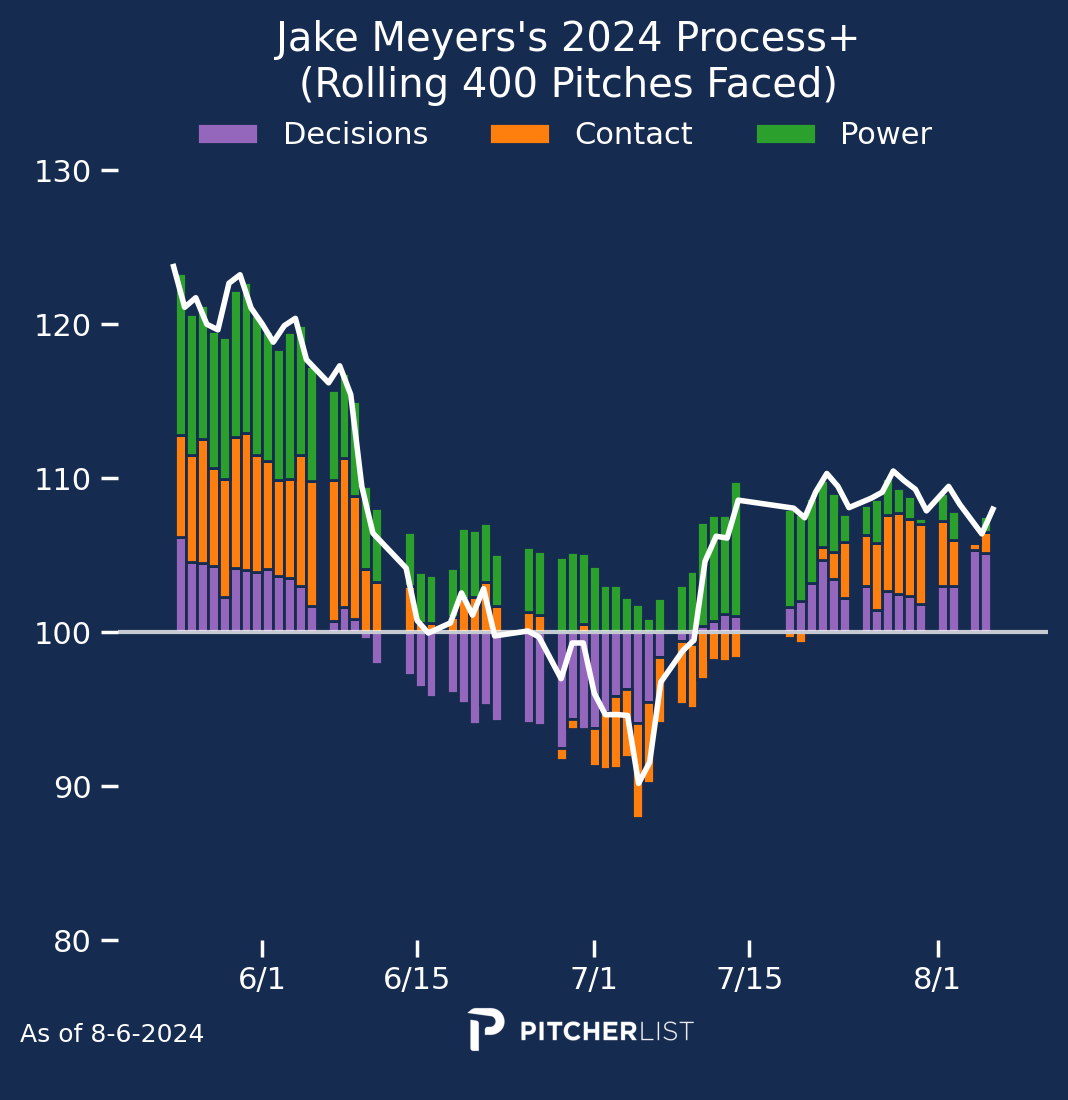We’re back with another week of the PLV report. This series will use the PLV metrics to contextualize player performance, and this week we’ll use our PLV model (Nick’s primer on PLV from last year can be found here) and subsequent hitter metrics (especially Process+, which you can read about here). With per-pitch quality, we can make Hitter PLV metrics that adjust a hitter’s Decisions, Contact, and Power based on the quality of the pitches they’ve faced. Our newest hitter metric, Process+, combines our hitter stats into a single, per-pitch value metric. Note: Process+ is scaled per-pitch, and values tend to be closer to 100 than they are for wRC+, in both directions.
Note: PLV metrics listed are current through Tuesday, August 6th.
For the first PLV Weekly with Process+ available, I’m going to take a look at some hitters whose recent performance trends don’t quite match what the underlying metrics say.
We start with a member of the newly victorious Chicago White Sox. Vaughn has had a fairly disappointing season thus far: 90 wRC+ as a first baseman just will not cut it (sure enough, he’s been below replacement by fWAR). He’s recently flirted with above-average performance, but it’s recently taken a dip back to merely average.
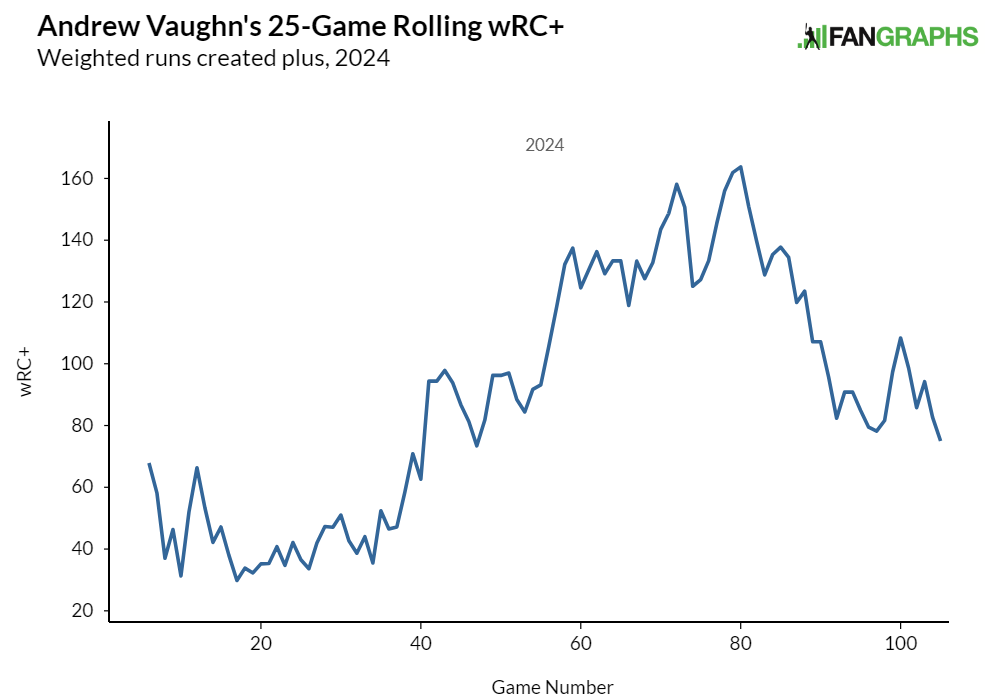
Per our hitter metrics, however, Vaughn is providing just as much value as he was during his hottest stretch, thanks primarily to hitting the ball hard, though he did make useful Contact for a stretch. Power is the most impactful component of Process+, and takes the longest time to stabilize. With Vaughn finding his Power groove, I would anticipate that his results start to trend back above replacement level (and then some).
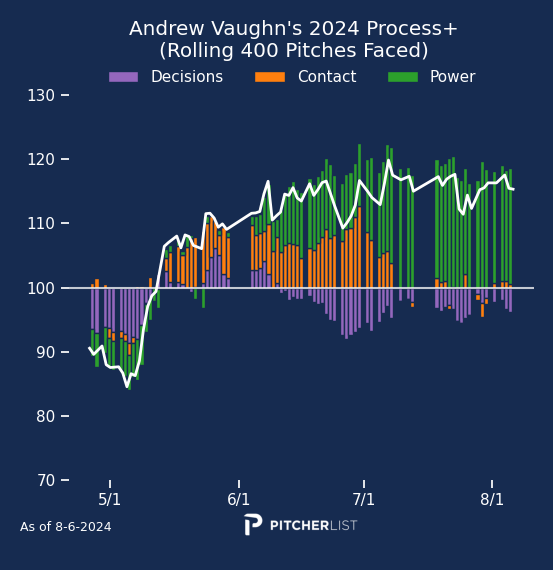
Lowe has had an up-and-down season. He started hot, cooled off significantly, got hot again, and has recently fallen back towards his season average wRC+ (111). One of the easiest indicators of “luck” to use is BABIP. I know there is skill to running a high/low BABIP, but it takes an eternity for that to stabilize. I’ve overlaid Lowe’s BABIP over his wRC+ to show how dependent his results are on batted balls not finding gloves.
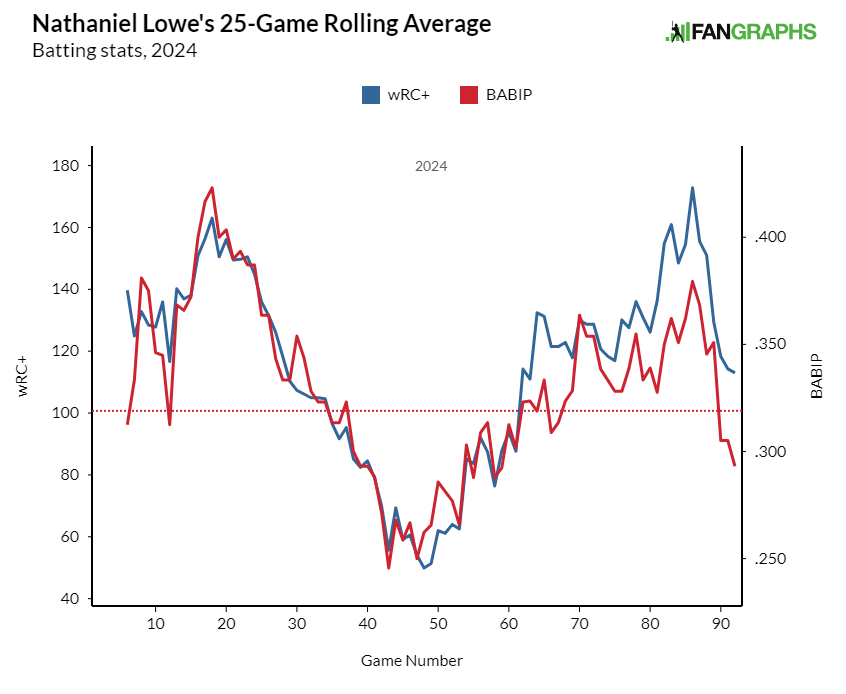
There’s a nearly 1:1 relationship! Interestingly, Process+ disagrees with a lot of the arc of Lowe’s season. There was a fallow period in mid-July, but he seems to have regained his form into August, with his elite Decisions lining up with where they were at the start of the year. He’s also begun to approach league average Power, which is very promising for someone whose decisions give him this high of a floor. I’m buying his most recent dip.
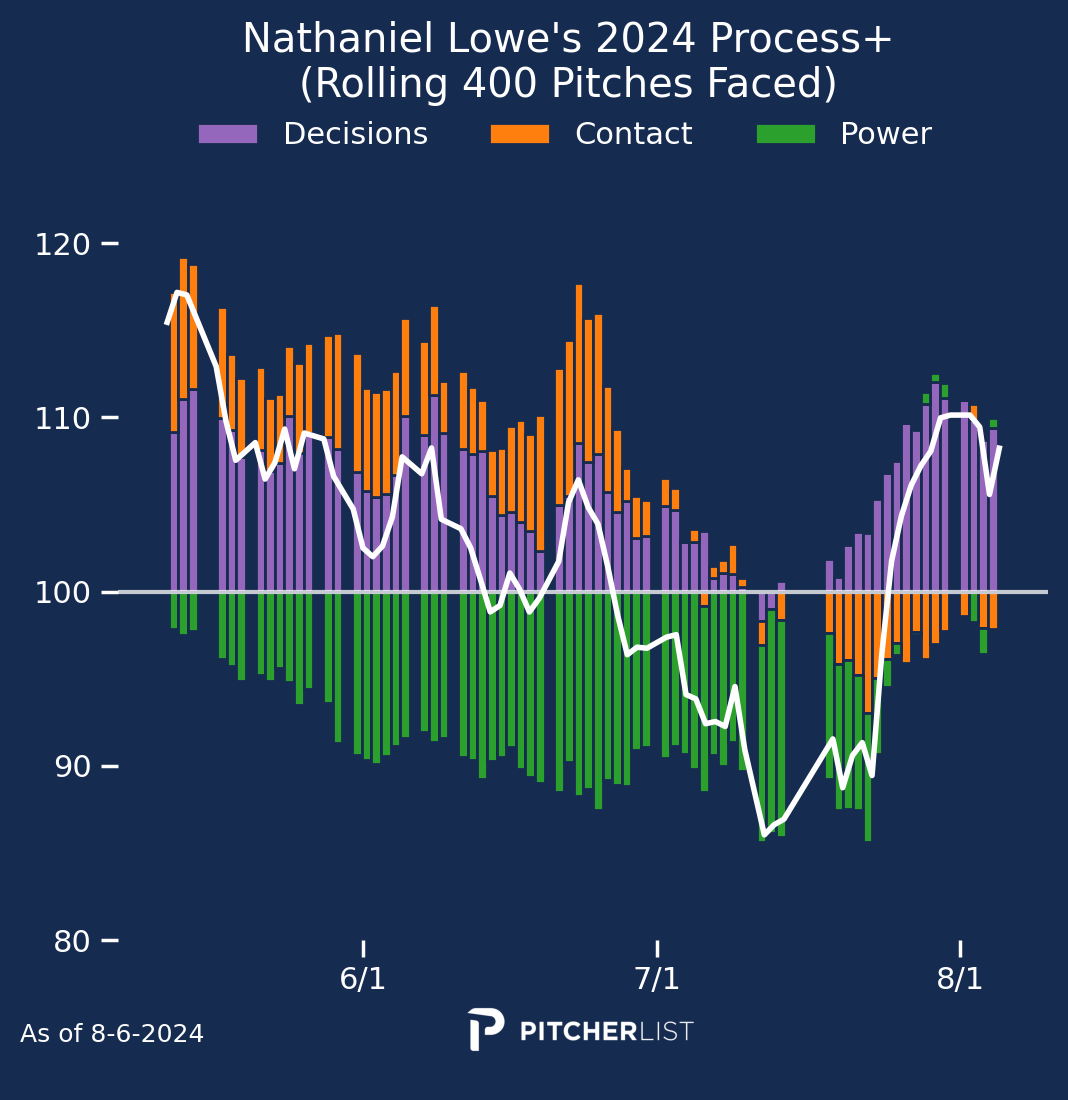
Pederson is the most effective platoon bat in baseball. The Giants almost exclusively run him out vs RHP, and he has rewarded them with a very productive season. The shape of that production brings some cause for concern, as it appears he has consistently trended down as the games have accumulated (barring a very recent spike).
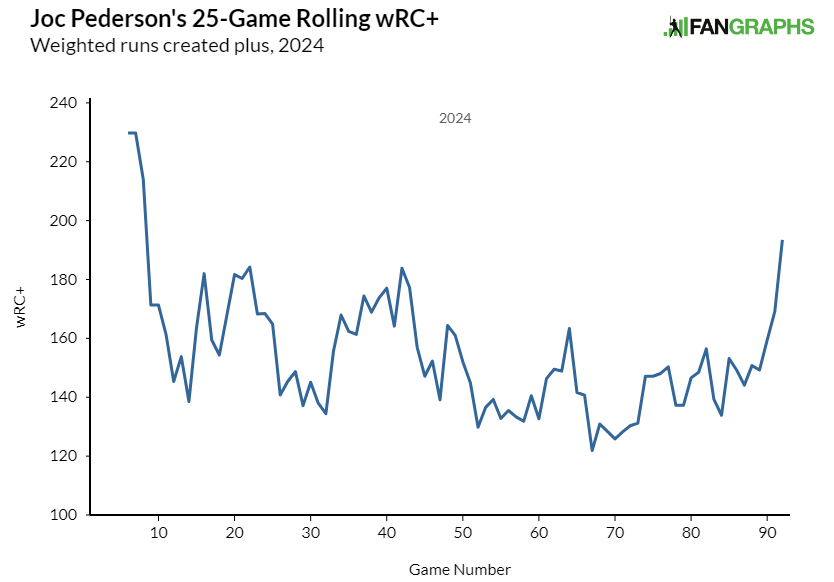
Looking under the hood shows us that the spike at the end of that chart is not only deserved but that Pederson has been working towards it for a while. Pederson has been absolutely crushing baseballs all season, but he’s now adding average Decisions and Contact to the profile, and it looks very sustainable. Whatever he did around the All-Star break (mid-July gap), is paying off for him in a BIG way.
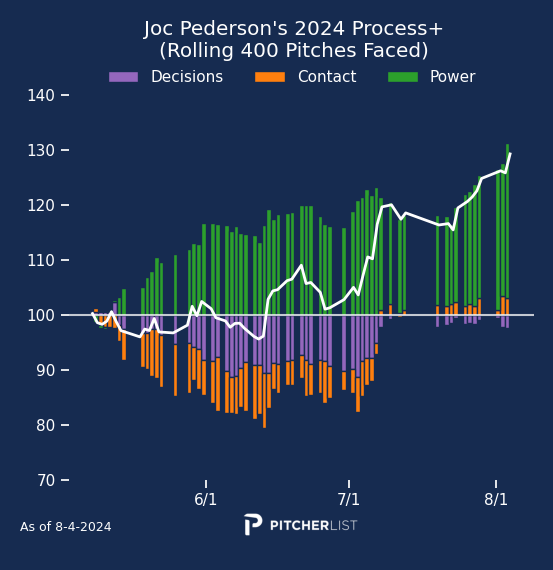
Jackson Merrill has made the leap from top prospect to Rookie of the Year contender. In addition to providing surprisingly adequate outfield defense (for a player who was drafted and developed primarily as a shortstop; the Padres can never have enough shortstops), Merrill brings a very good bat, with an approach of “swing often, make lots of contact, and sometimes it will be hit hard”. That approach has paid off for him, especially in late June/early July (around games 75-95 on the chart). Is that flash of talent hinting at greatness?
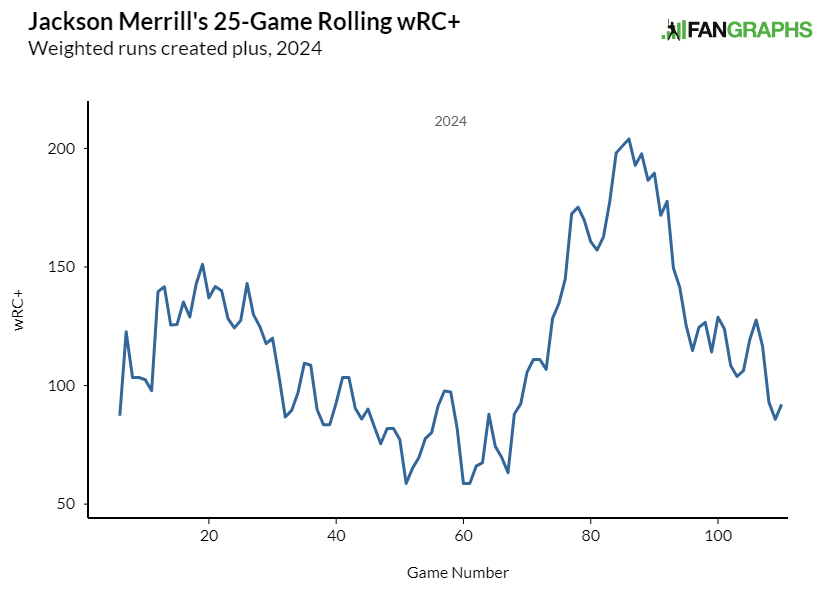
Not this season. He’s incredibly young (he’s 21!) to be performing this well at the MLB level, but I think the hot streak is just that: a hot streak. I still think he’s a very talented hitter who has shown the ability to have plus Contact and Power, but I can’t see the hits falling for him quite how they did for that ~20-game stretch. It’s interesting that he has been selling out for Power as the season goes on. If he can maintain that batted-ball quality while bringing his Contact back to where it was at the start of the season, he could be one of the new faces of baseball.
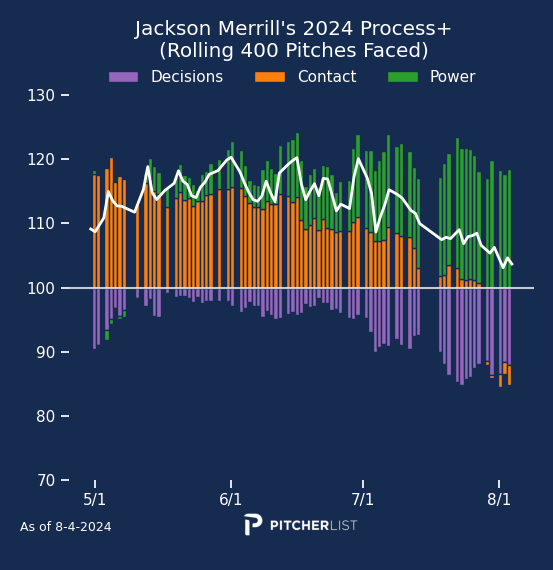
Speaking of the new faces of baseball… Bobby Witt Jr.! The guy has been absolutely raking this year, in addition to providing league-leading defense. That’s an easy MVP candidate, and he’d probably be running away with the award if it weren’t for Aaron Judge hitting roughly two HRs per game. Witt’s season has been surprisingly volatile for someone who’s felt like they’ve been crushing it all season. He went nuclear to start, then settled into being merely great, then dialed it back up to nuclear, and now seems to be hovering around being “only” incredible.

The underlying metrics for his season have a different story to tell. He’s been surprisingly consistent, which may be a disappointment to those hoping those stretches of 250 wRC+ are indicative of his talent level. I can’t stress enough that this is still a very good performance. For context: a 140 Process+ is the fourth-best result in the league this season (a rough comp is Witt’s very own 165 wRC+, which is fifth in baseball). This is one of the truly great hitters in the league, even if he’s not quite the “first ballot Hall of Fame” calibre bat he flashes.
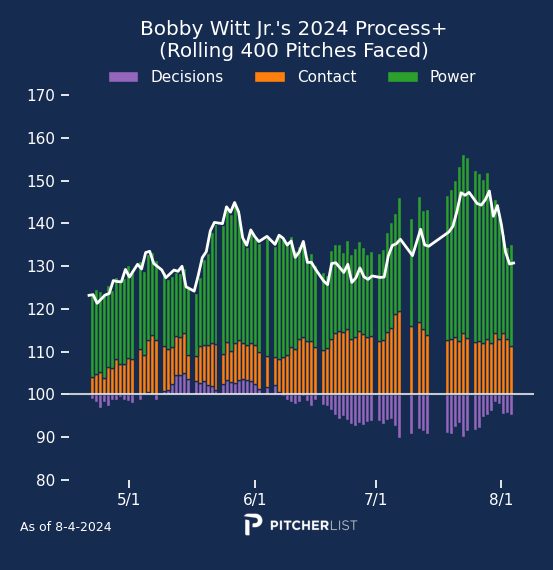
Ho boy. If you thought Nathaniel Lowe’s overall performance mimicked his BABIP, wait until you see Arraez’s:
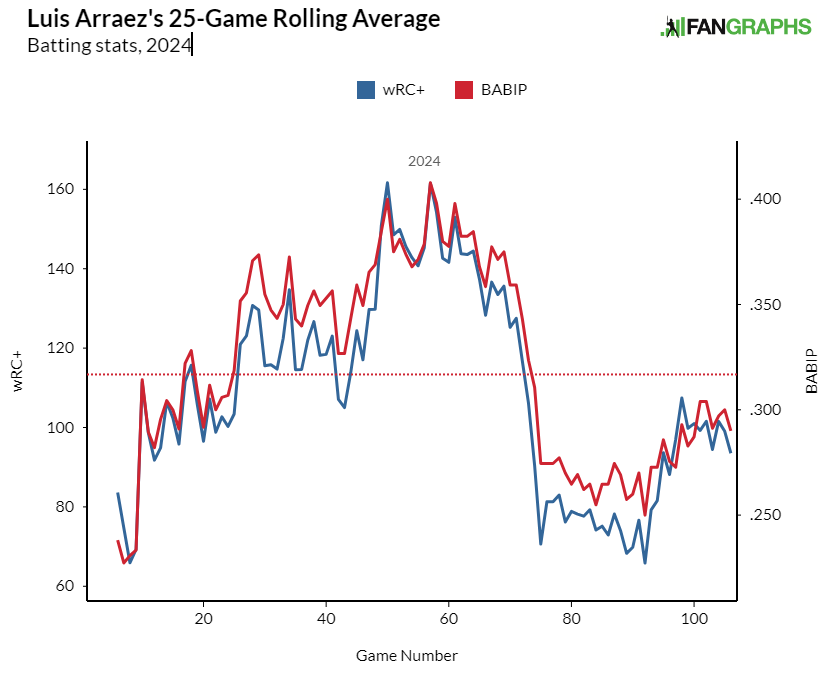
You can’t convince me that those are different lines. Fangraphs must have screwed something up when they rendered the chart (they didn’t), because that is nearly identical. These are the pros and cons of having an extremely Contact-heavy profile. If you can make good contact, you’ll give yourself plenty of spins at the BABIP-roulette wheel. The thing about chance is that results can come in bunches. Sometimes you get a string of hits (games 50-70), only to then come up empty for long stretches (games 75-95). Our Contact metric helps see through that to identify that Arraez hasn’t changed his underlying process. He’s just navigating some BABIP luck.
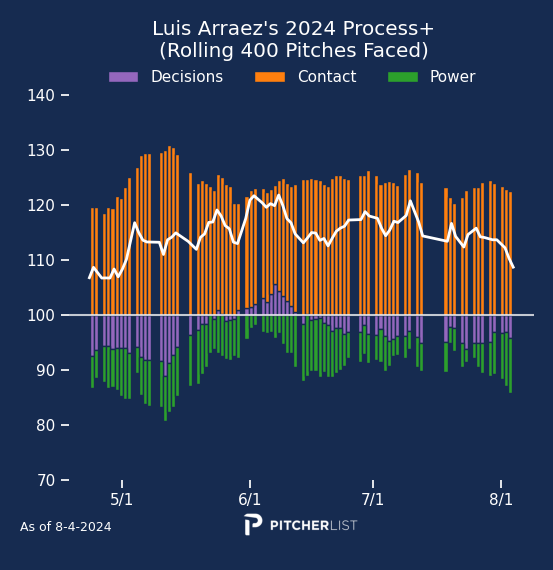
You may not know this, but Oneil Cruz hits the ball hard. Very hard. He has one of the fastest bat speeds in baseball, and he uses that speed to turn pitches into souvenirs in the outfield bleachers.
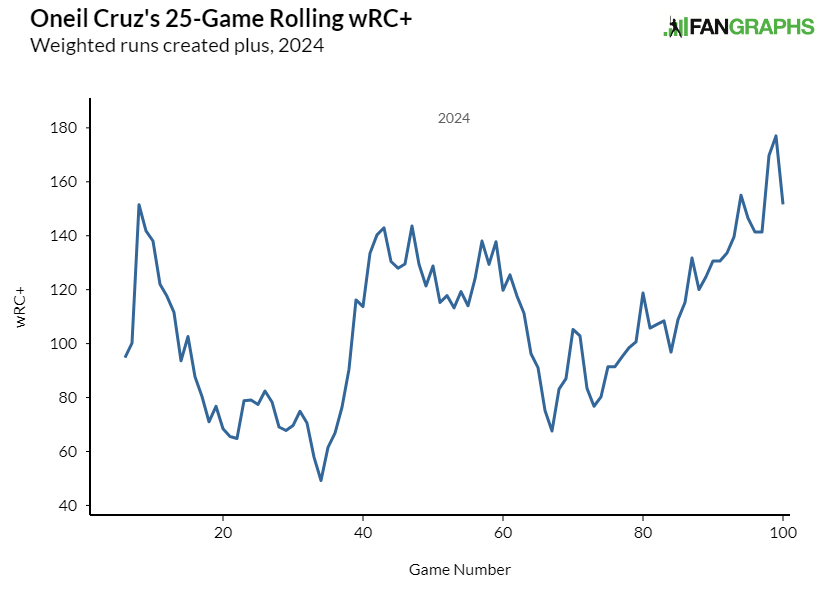
One issue with this approach is that he’s starting to sell out for that Power. He’s swinging at worse pitches, and that drops the floor of his performance. Once his batted ball luck starts to even out (he’s currently rocking a .400+ BABIP over his last 25 games), that wRC+ may come falling down for Cruz. That’s not to say that he’ll be “bad”, but that this lofty recent performance is propped up by results that seem unsustainable.

We’ll wrap up with a fun one: why are the Astros playing Jake Meyers, when his bat is so bad? His best stretch over the last 40 games played is only 100 wRC+!

Well, the Astros might actually know what they’re doing here, because Meyers seems to be getting supremely unlucky. Earlier in the season, he was a legitimate threat at the plate. The difference is that his lows shouldn’t be nearly as low as they’ve been. Meyers should not be flirting with a 60 wRC+ right now. He rates as an above-average player by literally all of the PLV hitter metrics! He thankfully provides very good center-field defense, so his playing time isn’t as big of a risk, but if the results start to match what his underlying process looks like, he could be a valuable contributor for the Astros.
